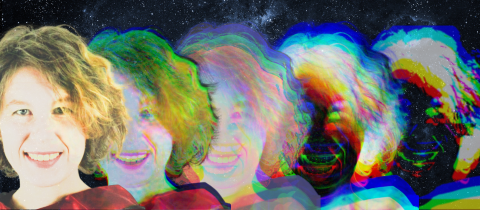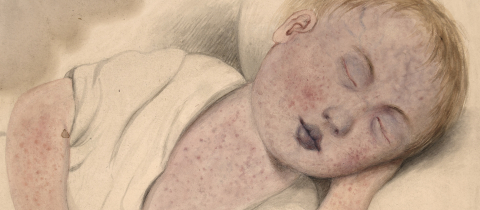It apparently started with a tweet.
Just a few days before New Year’s Eve in 2019, as a world-altering pandemic was silently brewing, former baseball pitcher Brandon McCarthy tweeted, “this is nonsense but did people in the past look older when they were younger?” The floodgates were opened, with Twitter users sharing old photos of their mature-looking parents accompanied by a shockingly young age. A balding man looking not unlike George W. Bush during his presidency was 23. A woman with a haircut now associated with the elderly is said to be in her 40s. A man hugging a child clearly looks to be in his 70s… but he is only 45 in the photo, and the child is his son.
This observation resurfaces periodically on the Internet. Sometimes, it’s wedded to a photo of Steve Martin and Diane Keaton from the movie Father of the Bride Part II, in which they were supposed to play 45-year-olds while looking much older by today’s standards. Sometimes, it’s focused on a photo of the cast from the TV show Cheers, which shows how old each actor reportedly was when the snapshot was taken. Life, it seems, was rough in those days.
But is it true? Did people in the past really look older when they were younger?
Old clothes
When our curiosity is piqued by a surprising example shared on social media, our first thought should be, “Is this example representative?” Obviously, the most shocking and extreme examples are going to elicit the strongest reactions, including the urge to share. So when you see a post on Facebook revealing that actor Wallace Shawn—bald, with an unkempt tuft of hair crowning the back of his head, looking like a middle-aged manager contemplating retirement—played a 36-year-old in My Dinner with Andre (the actor was 38 when the movie came out), ask yourself if Shawn’s look was representative or a bit of an outlier.
And while we’re on the topic of biases (and hair), it’s important to highlight the influence of hairstyles on how we view other people. Today’s fashion-forward hairdos will be tomorrow’s antiquities. When we look at a photo from the 1960s or 70s, those hairstyles strike us as being old. They are typically no longer in vogue, still worn by older people who never grew out of them. Besides, while today’s styles often aim to de-age people, yesterday’s hairdos often were meant to convey maturity. As hairdresser Gwenda Harmon told Dazed Digital, “Certain hairstyles of the 1980s actually made some youth appear older due to their bold and sophisticated nature.” Men’s fade haircuts may look fresh now, but I wonder how they will be perceived by those who are born today.
The same impression can be garnered from garments. Dale Irby, a physical education teacher in Dallas, Texas, wore the same clothes in every school picture over the course of 40 years: a 1970s pointy-collared polyester button-up shirt and a brown wool sweater vest. When you look at the first of this impressive series of portraits, which begins in 1973 and shows a man aging as his clothes remain the same, it becomes apparent that outdated fashion also colours our appraisal. We associate old fashions with old people.
But putting these biases aside, there are genuine reasons to think that, indeed, people did use to look older. It has to do with the trials and tribulations the human body was put through back then.
Cigarette skin
In 1965, roughly half of all Canadians and Americans reported indulging in this addictive habit. A few years ago, that number had dropped down to 1 in 7 for the USA and 1 in 10 for Canada. That habit’s impact on our looks was the subject of a scientific paper with the rather confrontational title of, “Does cigarette smoking make you ugly and old?”
Indeed, smoking can lead to “cigarette skin,” defined as grayish, wrinkled skin. The studies of this phenomenon have issues, but they consistently show that smoking causes wrinkles. How? Decreased blood flow to the skin, impaired production of collagen, oxidative damage, and an interesting hypothesis: that the irritating effect of cigarette smoke on the nostrils and eyes might make smokers regularly squint. Plummeting rates of smoking over the decades means less premature aging of the skin.
Bad air in general is bad for the skin. Air pollutants like polycyclic aromatic hydrocarbons, ozone, and particulate matter have all been implicated in initiating a chain reaction that leads to the creation of reactive oxygen species within skin cells. When these reactive molecules are out of balance, they can trigger the cells they have damaged to initiate inflammatory responses, and over time, our skin ends up looking weathered. While air pollution is still a problem, substantial progress has been made since the days of unabashed coal consumption. Our ancestors’ skins were battered by a potent cocktail of invisible, airborne molecules; ours, much less so.
Skin aging is also caused by ultraviolet rays. While my parents’ generation would casually cover their skin in oil to speed up the process of suntanning, we are now much more aware of the harms caused by UV light, both in terms of skin cancer and photoaging. Our increased use of sunscreen is doing more than keeping cancer at bay: it keeps our skin looking young.
While the anxiety of living in a world in perpetual crisis may make us feel like our living conditions have worsened in recent years, in some ways they have improved in the Global North. Hard labour at a young age was not unusual half a century ago, when going to university was a more limited privilege and work often meant physical exertion. Today’s teenagers are more likely to stand behind the counter at McDonald’s or sit in front of a computer. The toil on our body has diminished. Similarly, the average age for having a baby has been going up and families have been getting smaller. The causes of our stress have been shifting toward the psychological and away from the physical. Our bodies thus look younger. The wear and tear has moved on to the mind.
Our diets have also improved in one way over time. Vitamin deficiencies used to be more common in the past due to limited access to diverse foods, lack of food fortification, and poverty. The link between nutrition and skin aging is still muddled, but we know that key nutrients, including vitamins, counteract the oxidative stress in the body, which can manifest as signs of aging. All this talk of oxidative stress and the molecules that can prevent it, antioxidants, does need to be qualified. Reactive oxygen species are not unilaterally bad, nor should antioxidants be consumed in mad quantities. It’s a balancing act. In short, if our diet is helping us stay younger, it probably has to do with us getting enough important nutrients in the foods we eat, and not with food preservatives allegedly “pickling” us.
Medicine and cosmetics are also lending a helping hand in preserving our youthful looks. With our modern culture’s obsession with youth and beauty, many of us are choosing to undergo interventions our grandparents did not have access to: Botox, face lifts, buccal fat pad removal, teeth whitening, and orthodontics. Cosmetic considerations, once seen as feminine, are seducing more and more men, who pay more attention to grooming or are now more likely to be interested in hair colouring, hair transplants, and products like minoxidil and finasteride (which have reasonably solid evidence as treatments for hair loss). Even make-up is crossing the gender divide. And let’s not forget about digital make-up. Though our photos are now at a much higher resolution than those taken half a century ago on film cameras, we are quick to turn on beautifying filters that can airbrush our skin and make us look uncannily smooth. Especially if you are a celebrity doing a photo shoot for a prestigious magazine.
All of these factors will make us look younger on average than past generations, but this youthful vigour is more than superficial, if we are to believe deeper measurements.
Pushing back the clock
In a 2018 paper entitled “Is 60 the New 50?”, scientists from Yale University and the University of Southern California, Los Angeles, looked at what they call “biological age.” When we celebrate our birthday, we are recognizing our chronological age; but researchers are now interested in how old our body really is biologically, as some of us may be aging slower than others due to differences in behaviour (smoking vs. not smoking) and medication use (controlling hypertension vs. letting it run free). Here, they compared two groups of Americans, one examined between 1988 and 1994, the other, between 2007 and 2010. These groups were contrasted using a number of measurements thought to reflect how old their bodies really were: cholesterol levels, blood pressure, lung capacity, and a number of molecules found in their blood.
The result is that the people in the 2007-2010 group were a little bit younger, biologically, than their counterparts in the 1988-1994 cohort. Women in their twenties or thirties were a few months younger, whereas men had “shed” a year and three months. The difference was at its most extreme in the group of people in their sixties and seventies. In the more recent cohort, these women were, on average, three years and eight months younger than their peers from the 1988-1994 cohort; men had “lost” four years and a little over three months. Same chronological age, but younger biologically.
The measurements used here, however, make up only one proposed biological clock. Others have been put forward, with many scientists trying to interpret the epigenetic marks all over our DNA—telling our genes when to be active and when to be silent—as a code revealing how old our body really is. None of this is ready for prime-time, however. Different biological clocks seem to be measuring different aspects of aging, which makes them too unreliable for doctors to use in the clinic.
There are differences between our chronological age and our true, biological age, but we have not yet found a reliable and standardized way of measuring this gap.
When we push aside the fact that extreme examples are going to get shared the most, and that the hairstyles and fashion senses of yesterday are encoded in our brain as “old,” we are still left with many reasons why we tend to look younger than past generations did. Our skin, hair and teeth are benefiting from less cigarette smoke and physical toil, as well as an ever-expanding collection of cosmetic interventions designed to make us look younger.
Clearly, this superficial contrast between us and our parents’ and grand-parents’ generations is riveting: when YouTuber Michael “Vsauce” Stevens made a 23-minute video about this topic a year ago, it racked up 14 million views and inspired a bevy of articles (including this one).
The unanswered question, though, is will this phenomenon continue? Will people forty years from now look at our pictures and wonder, in shock and amazement, just how much older we used to look back then?
Take-home message:
- When we see photos of people from decades ago who looked much older than their age, we need to take into consideration that their hairstyles and clothes are colouring our perception, and that extreme examples are going to be shared on the Internet much more than more banal ones
- On average, though, we do tend to look younger than previous generations did, because of plummeting rates of smoking, increased use of sunscreen, and medical and cosmetic interventions designed to preserve our looks
- There is also evidence from biological measurements that the human body tends to be younger at a given age than it used to a few decades ago, although these “biological clocks” are not yet validated to give reliable and standardized answers







